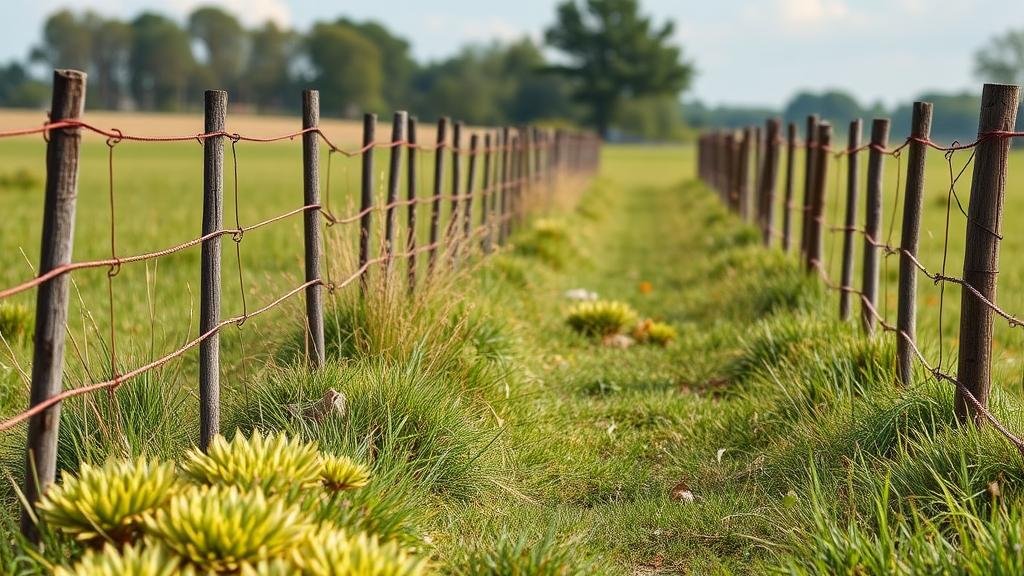Detecting Along Fenced Pastures for Coins Dropped by Early Farmers
Detecting Along Fenced Pastures for Coins Dropped by Early Farmers
The practice of metal detecting has gained significant popularity among history enthusiasts and hobbyists alike, particularly in locations where historic activity was prevalent. Among these locations, fenced pastures serve as intriguing grounds for unearthing coins dropped by early farmers. This comprehensive examination delves into the methodologies, tools, and historical context of detecting coins in these areas, providing both seasoned detecters and novices with valuable insights.
Historical Context of Farming and Coinage
The transition from nomadic lifestyles to settled agriculture marked the dawn of civilization. Early farmers, starting around 10,000 BC, had a profound impact on social structure and economy. As farming communities prospered, economic transactions became commonplace, leading to the circulation of coins, especially after the introduction of minted currency around the 7th century BC.
Coins, often made from precious metals such as gold, silver, and bronze, were utilized for trade. As farmers worked their fields, coins could easily be lost, either unintentionally during transactions or through minuscule mishaps. Historical records, combined with archaeological findings, indicate that early farming areas frequently yield such lost currency.
Identifying Optimal Locations
Understanding the likely places where coins may have been dropped is critical for effective metal detecting. Fenced pastures, often characterized by their distinct boundaries and historical usage, present multiple favorable locations:
- Gates and Entrances: These are frequently traveled points where farmers would have passed through with goods and equipment. Coins lost during these transit moments can accumulate over time.
- Near Old Barns and Sheds: Structures that housed farming tools and livestock often become focal points for farming activity, making them prime areas for coin loss.
- Around Water Sources: Ponds or streams that bordered pastures were often utilized for both livestock and irrigation. likelihood of dropping coins around these areas was high.
Tools and Technology for Detecting
Modern metal detecting has evolved with advancements in technology, providing detecters with tools that enhance their success rate. Here are essential tools primarily used when searching in fenced pastures:
- Metal Detectors: Choosing a reliable metal detector with the appropriate frequency for the terrain type is crucial. VLF (Very Low Frequency) detectors are popular due to their sensitivity to coin-sized targets.
- Pinpointers: These handheld devices help to precisely locate coins once a larger detector signals a target. This is especially valuable in pastures where the presence of roots and rocks can complicate retrieval.
- Digging Tools: A quality digging trowel or spade is essential for carefully extracting coins without causing damage, especially in softer ground conditions.
Legality and Best Practices
Before engaging in metal detecting activities, it is imperative to understand the legal implications. Laws regarding metal detecting can vary significantly by location and property ownership. Here are some best practices to follow:
- Obtain Permission: Always seek permission from landowners before detecting in fenced pastures. Trespassing without consent can lead to legal repercussions.
- Follow Local Regulations: Check local laws regarding metal detecting; some areas may prohibit the practice entirely, particularly in historic sites.
- Respect Nature: Ensure that your detecting activities do not damage the landscape. Fill in any holes or disturbances created in the process of digging.
Case Studies of Successful Detecting
The Midwestern USA
A recent case in rural Ohio illustrates the potential of detecting in fenced pastures. A group of hobbyists, employing advanced VLF detectors, targeted a pasture where early 19th-century farming activity was documented. focused on the area near an old barn and discovered a cache of coins, including several early 1800s half-dollars, which were later cataloged and authenticated. This case underscores how historical research coupled with metal detecting can yield extraordinary results.
The UK Agricultural Lands
In the UK, a well-known instance took place on a farm in Kent where a team of metal detectorists uncovered a trove of Roman coins in a pasture once used for grazing sheep. This discovery, noted for its archaeological significance, reignited interest in early agricultural practices in the region. coins, dated between 43 AD and 410 AD, provided insights into trade and the economy of Roman Britain.
Conclusion and Actionable Takeaways
Detecting for coins in fenced pastures where early farmers worked provides a unique intersection of history and hobby. Understanding historical contexts, employing the proper tools, and adhering to legal regulations signify a responsible approach to this engaging pursuit. Here are actionable takeaways for aspiring detecters:
- Conduct thorough historical research to identify potential areas with high coin loss.
- Use quality equipment tailored for the type of terrain you will be exploring.
- Always practice ethical detecting by securing permission and adhering to local regulations.
By embracing both the spirit of adventure and the importance of preservation, metal detecting in these rich agricultural landscapes can lead to meaningful discoveries while honoring our shared past.


